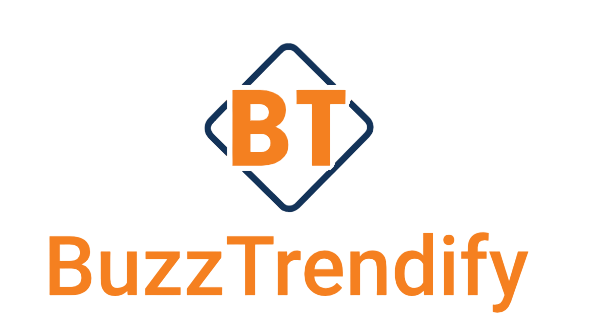Did you know 40% of U.S. borrowers want bigger personal loans with better terms and faster approval? This gap is what drives my guide.
I wrote this to help you find a greater personal loan. You’ll get a larger amount, better terms, or quicker approval. I made it simple and practical so you can act with confidence.
Personal loans give you a single lump sum to repay in even installments over a fixed term. This term is usually one to five years. Rates can be fixed or variable, and this choice is key when looking for the best personal loan options or a quick approval personal loan.
Qualification for a loan depends on your income, employment, and credit score. Lenders use criteria similar to major banks to set variable pricing. This means rate movements can be both a risk and an opportunity when aiming for a greater personal loan.
I’ll show you how to compare rates, find low-interest loans, speed up approvals, and follow an easy application path for U.S. borrowers. My advice is warm and direct, like from a knowledgeable friend. This way, you can make smarter decisions quickly.
Key Takeaways
- A greater personal loan means bigger amounts, better terms, or faster approval.
- Loans are usually lump sums repaid over fixed terms with fixed or variable rates.
- Income, employment, and credit score drive lender decisions.
- Comparing rates and fees reveals the best personal loan options.
- Understanding prime-rate practices helps when choosing variable-rate loans.
Understanding Personal Loans and Their Benefits
Many people get confused by lending terms. I want to make it simple and useful. Knowing what you can borrow and why is key. This knowledge helps you choose the best personal loan options.
What is a Personal Loan?
A personal loan is a sum of money you repay in regular installments over a set time. Banks like Chase, Wells Fargo, and Discover offer loans with fixed or variable interest rates. Your credit history, income, and debt-to-income ratio affect the offer you get.
Some lenders let you pay off your loan early without penalty. This can save you money if you have extra cash. Always read the loan disclosure to understand fees, terms, and any early payment rules.
Common Uses for Personal Loans
Personal loans are useful for many things. A common use is debt consolidation. This means replacing high-interest credit cards with one loan at a lower rate to make payments easier.
Other uses include home improvements, medical bills, education expenses, and small-business funding. For example, a loan of $8,000 for a kitchen renovation or $12,000 for medical bills can be faster than using retirement funds or selling assets.
Key Benefits of Taking Out a Personal Loan
One big benefit is knowing your monthly payments, which is true for fixed-rate loans. This helps with budgeting and planning.
Personal loans often have lower rates than credit cards for those with good credit. This can save you money on interest and shorten repayment time. Lenders provide calculators to estimate payments and compare options, but remember, these are just estimates.
Quick approval is another plus if your documents are ready. The loan term, amount, and fees affect affordability and total cost. Choose a loan that fits your needs, not just the largest amount available.
| Feature | Why It Matters | How to Use It |
|---|---|---|
| Fixed vs. Variable Rate | Controls monthly payment stability and long-term cost | Pick fixed for steady budgets; choose variable if you expect rates to fall |
| Loan Term | Short terms lower total interest, long terms lower monthly cost | Balance monthly budget with total cost to find the best personal loan options |
| Prepayment Policy | Impacts ability to save on interest by paying early | Confirm no penalty for early payoff if you plan to accelerate payments |
| Fees and Origination Costs | Can add significantly to the loan’s cost if not disclosed | Compare APR and fee structures across lenders before signing |
| Approval Speed | Affects how quickly you can access funds | Have ID and income documents ready for faster review and possible better loan offers |
How to Determine Your Loan Eligibility

I guide you through how lenders decide who gets a personal loan. This guide helps you understand your current situation. It also shows you how to improve your chances for a loan when you need one.
Factors That Affect Your Eligibility
Lenders check several things: your credit history, how much you earn, if you have a job, your debt-to-income ratio, and if you have collateral for secured loans. Each of these factors shows how risky you are. Banks and credit unions often say that loan offers depend on meeting their credit standards.
Your credit history shows how well you’ve paid bills in the past. Your income and job stability show if you can pay back the loan. Your debt-to-income ratio shows how much of your income goes to debt. Having collateral can help if your credit isn’t great.
The Importance of Credit Scores
Your credit score greatly affects the interest rate and how much you can borrow. A higher score means you might get a better rate from places like Wells Fargo or Citibank.
Lenders set loan rates based on a benchmark, like the prime rate plus an extra amount. Banks like Scotiabank use similar methods. This means your credit score directly affects the rate you get. A better score can help you get a better deal when comparing rates.
Income and Employment Verification
To increase your chances of getting a loan, prepare your pay stubs, W-2s, 1099s, and bank statements. Lenders might call your employer to check. Self-employed people should have tax returns and profit-and-loss statements ready.
Showing steady income and a stable job makes you less risky. This can lead to bigger loans and better terms when comparing rates from different lenders.
Remember, some lenders offer options like skipping payments or buying payment protection. These might cost extra or add interest. But, paying on time is the best way to keep your loan eligibility strong and rates favorable.
| Eligibility Factor | What Lenders Check | How to Improve |
|---|---|---|
| Credit History | Payment record, defaults, public records | Pay bills on time, correct errors, lower credit use |
| Credit Score | FICO or VantageScore tier | Dispute mistakes, maintain older accounts, diversify credit |
| Income | Pay stubs, W-2s, tax returns | Provide documented pay, increase earnings, show consistent deposits |
| Employment | Job stability, employer verification | Avoid gaps, get written verification, consider a co-signer |
| Debt-to-Income Ratio | Monthly debt payments vs. gross income | Pay down balances, refinance high-rate debts, reduce new credit |
| Collateral (if secured) | Asset value and lien status | Offer reliable collateral, keep documentation current |
Types of Greater Personal Loans Available
I want to help you understand the main options for larger personal loans. Choosing the right one is key for cost, risk, and getting funds quickly. Let’s explore the common paths to find the best fit for you.
Unsecured vs. Secured
An unsecured personal loan doesn’t need collateral. Lenders look at your credit score and income to approve the loan. This option is fast and simple for those with good credit.
A secured personal loan, on the other hand, uses an asset like a car or home equity as collateral. This can get you a larger loan or lower rates, even with less-than-perfect credit.
Consider what you want. For more borrowing power or a lower rate, a secured loan or co-signer might be best. If you don’t want to risk your assets, an unsecured loan is safer but might cost more in interest.
Fixed vs. Variable Interest Rates
Choosing between fixed and variable interest rates depends on your preference for predictability. A fixed rate keeps your interest steady, making budgeting easier.
A variable rate, tied to a benchmark like a bank’s prime rate, can start lower. It might save you money if rates drop. But, payments could rise if rates increase.
Think about your needs and comfort with change. Fixed rates are good for stable budgets. Variable rates might save you money if rates stay low, but could increase.
Peer-to-Peer Lending Options
Peer-to-peer lending connects you with investors through platforms. It can offer competitive rates and flexible terms, making it a good option to compare with banks.
When looking at P2P options, check the platform’s reputation, fees, and protections for borrowers. Some platforms cater to higher-risk borrowers and may approve larger loans when banks say no.
For a big personal loan, compare P2P offers with traditional lenders. You might find a mix of speed, affordability, and approval chances that suits your needs.
- Tip: For a large loan, consider using collateral, a co-signer, or P2P platforms to get better deals.
- Tip: Weigh the security of a secured loan against the flexibility of an unsecured loan for repayment planning.
- Tip: Think about how fixed vs variable interest affects your budget before making a choice.
Tips for Comparing Personal Loan Offers

I want to help you find the right loan. Start by making a list of what matters most to you. This could be your monthly budget, the total cost of the loan, or how quickly you need the money. Look at offers from banks like Chase, credit unions like Navy Federal, and online lenders like SoFi to see your options.
Don’t just look at the interest rate. The APR, or annual percentage rate, includes interest and fees. Some lenders offer rates based on prime plus a margin. Your credit score can affect this rate. Rates also change based on the loan amount and term.
Interest Rates: What to Look For
Compare APRs and check if rates are fixed or variable. If you need money fast, compare quick approval loans to their APRs. A low rate might seem good, but hidden fees can increase the APR, making it a bad deal.
Understanding Fees and Charges
- Origination fees: a percentage taken up front by many banks and online lenders.
- Late fees: can add up quickly and trigger penalty rates.
- Prepayment terms: some lenders allow early payoff without penalty, others charge a fee.
- Optional insurance: loan protection adds to cost but may be useful in certain situations.
Be careful with skipped payments. They can add unpaid interest and insurance to your balance, increasing what you owe.
The Importance of Loan Terms
Longer terms mean lower monthly payments but more interest paid. Shorter terms cost more each month but save money overall. Use calculators to see how different terms affect your payments. Remember, these are estimates, and the fine print matters.
To find the best loan, compare several offers side by side. Make a table with APR, term, monthly payment, fees, and approval speed. Consider convenience from lenders you trust, like Wells Fargo or Marcus by Goldman Sachs, and the overall cost.
Make a shortlist of lenders that fit your needs. Then, ask for final quotes and check customer reviews. Choose the loan that offers a realistic repayment plan and a low interest rate that fits your budget.
The Application Process for Personal Loans

I’ll walk you through each step to feel ready before you apply. A well-prepared application increases your chances of approval and speeds up the process. My goal is to help you avoid surprises and get your loan quickly.
Steps to Preparing Your Application
First, check your credit report for errors from Equifax, Experian, and TransUnion. Fix any mistakes before you apply. Decide on a loan amount and repayment term that fits your budget.
Collect recent pay stubs, W-2s, or 1099s. If you’re self-employed, gather your last two years of tax returns. This information helps lenders and makes the process smoother.
Request prequalification to compare rates without hurting your credit. Prequalification lets you shop for loans without unnecessary credit checks.
Necessary Documentation
Have a government-issued ID and your Social Security number ready. Lenders need recent pay stubs and bank statements to verify your income and cash flow.
If you’re freelance or run a small business, include your last two years of tax returns. Some lenders also ask for proof of address and an employment verification letter. Having these documents ready speeds up the application process.
Common Application Mistakes to Avoid
Don’t apply for several loans at once. Too many hard inquiries can lower your score and hurt your chances. Be truthful about your debts and income—lying can lead to denial.
Don’t skip required documents or ignore important details. Missing pages, unclear bank statements, or ignoring clauses about interest or insurance can slow things down. Being accurate and complete is the fastest way to approval.
Managing Your Personal Loan Responsibly

Handling a loan can feel overwhelming, but there are simple steps to make it easier. I focus on daily habits that keep your credit score high and costs down. These tips help you manage your loan balance and keep your borrowing options open.
Tips for Budgeting Your Loan Payments
I suggest creating a monthly plan that includes your income, essential expenses, and a specific amount for loan payments. This makes it clear how much you can afford each month.
Also, have a buffer for interest rate changes. Keep an emergency fund that covers at least one payment. This way, a short-term issue won’t lead to missing a payment.
Use tools like bank notifications or a spreadsheet to track due dates. Budgeting your loan payments reduces stress and protects your credit score.
Setting Up Automatic Payments
I recommend setting up automatic payments for your personal loan through your lender’s portal or your bank’s bill-pay. This avoids late fees and human errors.
Many lenders, like Capital One and Discover, offer online tools for easy setup. Make sure to confirm the payment date, amount, and remaining balance when you sign up.
If your income schedule changes, adjust your payment schedule to ensure timely payments. Automatic payments help you stay on track without constant reminders.
What to Do If You Can’t Make a Payment
If you’re facing trouble, contact your lender immediately. I’ve found that quick communication opens up options like short-term forbearance or payment skips.
Remember, skipping a payment can increase your interest and principal. Ask about how this affects your total cost before agreeing.
Get any agreement in writing and keep records of all conversations and confirmations. If your loan has protection insurance, check if claims apply and how premiums are handled.
| Action | Why It Helps | Quick Tip |
|---|---|---|
| Set a dedicated repayment line in your budget | Ensures monthly money is allocated before discretionary spending | Use a calendar reminder the day after payday |
| Enroll in automatic payments personal loan | Reduces missed payments and late fees | Verify dates and amounts after each rate change |
| Maintain a one-payment emergency fund | Prevents default during short-term income hiccups | Build this by saving a small portion of each paycheck |
| Contact lender at first sign of trouble | Preserves options like forbearance and avoids surprises | Record names, dates, and agreement details |
| Review loan statements monthly | Helps you spot errors and track progress | Compare balances to your amortization schedule |
By managing your personal loan with consistent budgeting and automatic payments, you avoid extra fees and keep your credit options open. If you need to adjust, act early and document every step to stay on track financially.
The Impact of Personal Loans on Your Credit Score
I want to explain how personal loans can change your credit score. A well-managed loan can help build stronger credit. But, making mistakes can make borrowing harder and more expensive.
How Personal Loans Affect Credit Utilization
Personal loans can add variety to your credit mix and lower your credit card balances. This often improves your score because credit scoring models treat personal loans differently than credit cards.
Installment loans don’t affect your credit utilization like credit cards do. If you use a personal loan to pay off credit cards, your revolving balance goes down. This can boost your FICO score, as long as you don’t add new balances to those cards.
The Role of On-Time Payments
On-time payments are key to your credit health. I stress the importance of keeping track of your loan payments. Consistent payments show lenders you’re reliable.
Use calendar reminders or set up autopay with lenders like Discover or Marcus to avoid late payments. Regular payments can increase your score and qualify you for better loan rates.
What Happens with Late Payments
Late payments are reported to Experian, TransUnion, and Equifax and can quickly lower your score. Lenders may charge late fees and increase your interest rate, making the loan more expensive.
Some lenders offer hardship programs that let you skip or defer payments. These options often add interest and can affect your loan insurance or other protections. So, balances may grow if payments are missed.
I suggest checking your credit reports often and using simple strategies to improve your credit. Paying on time, keeping card balances low, and avoiding new high-interest debt can lead to better offers from top lenders like Chase and Wells Fargo.
When to Consider Refinancing Your Personal Loan
I keep an eye on rates and credit scores because timing is everything. Refinancing can make your monthly payments lower, help you pay off your loan faster, or combine several loans into one. Let’s explore when it’s a good time to refinance your personal loan.
Signs That Refinancing Might Be Right for You
Your credit score has gone up. A better score can lead to better loan offers.
Interest rates have dropped. This means you can refinance for a lower rate and cover any fees.
You can handle a shorter payment term. This could mean paying off your loan faster. You might also want to combine several loans into one for easier management.
Benefits of Refinancing
Refinancing can lower your monthly payments and the total interest you pay. You can refinance for a lower rate to save money or pay off your loan quicker.
If your credit score has improved, you might qualify for more money or better terms. Consolidating loans can also make budgeting simpler.
How to Choose a Refinancing Lender
Compare APRs and fees from different lenders. Use tools from banks like Chase and Citi, or online lenders like SoFi and LendingClub to compare rates without a hard pull.
Check if there are prepayment penalties on your current loan. Look into the lender’s reputation, read all the fine print, and check customer service ratings before you decide.
Be careful with variable-rate offers. If your rate is tied to prime, find out how changes work. Knowing this can help you understand how your payments might change with market shifts.
| Decision Point | What to Check | Why It Matters |
|---|---|---|
| Credit Score Change | Recent credit report, score improvement | Higher scores often lower rates and expand lender options |
| Current Market Rates | Rate trends, prime rate movements | Falling rates support choice to refinance for lower rate |
| Fees and APR | Origination fees, closing costs, APR comparison | Upfront costs can negate savings if not compared |
| Loan Term Goals | Desired monthly payment and payoff timeline | Shorter term reduces interest but raises monthly payments |
| Rate Type | Fixed vs variable, prime plus margin details | Variable ties you to market swings; fixed gives predictability |
| Prequalification Options | Soft-pull offers, number of lenders to compare | Compare personal loan rates without hard inquiries to protect score |
| Lender Reputation | Reviews, BBB, regulatory disclosures | Reliable service reduces hassle and hidden surprises |
Understanding Prepayment Penalties
I want to explain a common loan clause that can change your repayment plan. Prepayment penalties can appear in personal loan contracts. They can alter the benefit of an attractive deal.
What Are Prepayment Penalties?
Prepayment penalties are fees a lender may charge if you pay off a loan early. They also apply if you make large principal payments that cut into scheduled interest. Lenders like Wells Fargo and Discover sometimes allow partial or full prepayment without charge.
Others may include a charge to protect expected interest revenue. Terms vary by product and institution. The fee might be a flat amount, a percentage of the remaining balance, or interest for a set period.
Reading the loan agreement can reveal whether the loan will penalize you for trying to pay off debt faster.
How They Can Affect Your Loan Strategy
A prepayment fee can change the math. An attractive low interest personal loan could be less advantageous if early payoff triggers a large charge. This matters when you plan to refinance, sell an asset, or aggressively pay down principal to save on interest.
On the other hand, a loan with no prepayment penalties lets you pay extra or pay off loan early without added cost. This freedom often makes an offer from a credit union or online lender more valuable than an offer with slightly lower rate but strict penalties.
Practical steps I recommend: confirm prepayment terms before you sign, ask the lender how they calculate any fee, and run numbers that include the penalty when comparing options. Factor in the penalty when calculating savings from refinancing or paying off early. This way, you avoid surprises.
| Scenario | What to Check | Impact on Strategy |
|---|---|---|
| Considering a low interest personal loan | Look for explicit language about early payoff charges | May favor a slightly higher rate with no penalty if you plan fast repayment |
| Planning to pay off loan early | Ask lender if paying off loan early triggers prepayment penalties | If penalty exists, calculate break-even point before extra payments |
| Refinancing or selling an asset | Confirm penalty amount and how it is applied | Include penalty in refinance savings estimate to decide whether to proceed |
Success Stories: How Personal Loans Changed Lives
I’ve seen how a good loan can change a family’s budget, open doors to education, or start a business. These stories show how people tackled real problems with personal loans. Let’s look at three examples and what we can learn from them.
Real-Life debt consolidation examples
A person had high-interest credit card debt from American Express and Chase. They got a debt consolidation loan from a local bank at a lower rate. This made their monthly payments smaller and easier to manage. They used the extra money to build an emergency fund and avoid using credit cards.
Funding education with personal loans
A graduate student at the University of California needed money for tuition after scholarships and federal loans. They got a personal loan to cover living costs and a summer course. They chose a loan with terms that fit their budget, keeping interest low.
Starting a business with personal loan financing
An entrepreneur started a bakery with a personal loan when banks wouldn’t lend. The loan helped buy ovens and initial stock. They had a co-signer for security and kept a close eye on finances to protect their family.
Each story shows the benefits and risks of personal loans. Always read the fine print, use calculators, and plan for the worst. Calculators provide estimates, but they help you compare options before you decide.
| Scenario | Typical Benefit | Common Risk | Key Action |
|---|---|---|---|
| Debt consolidation personal loan | Lower monthly payment, one bill | Longer term may increase total interest | Compare APRs and total cost |
| Fund education personal loan | Covers gaps when federal aid falls short | May have higher interest than student loans | Choose flexible repayment options |
| Personal loan for startup | Fast access to seed capital | Personal liability if business fails | Use realistic projections and consider co-signer |
The Future of Personal Loans: Trends and Innovations
The world of personal loans is changing fast. More lenders are going online. This means quicker decisions, easier rate comparisons, and apps that work on your phone.
Even big banks like Chase and Bank of America are getting in on the action. They offer online tools to help you compare rates without leaving your house.
The Rise of Digital Lending
Digital lending makes things faster and easier. You get quick answers and clear offers. This makes it simpler to choose the best loan for you.
Speed and clarity are key when picking a loan. They can lead to better deals.
Impact of Fintech
Fintech uses new tech to make loans better. Companies like SoFi and LendingClub are leading the way. They use automation and new data to offer lower costs and better tools.
Expect even smoother applications and faster money in your pocket. Algorithms will get better at understanding your needs.
What Borrowers Can Expect
The future of loans will focus on you and the rates. Keep an eye on prequalification tools and fine print. Many lenders base their rates on the prime rate plus a bit more.
With some planning, you can find the right loan. Improve your credit, compare offers, and understand your options. This way, you can use fintech and digital loans to get what you need.
FAQ
What is a personal loan and how does it work?
A personal loan is a sum of money you repay in fixed installments over a set time, usually one to five years. It can have a fixed or variable interest rate. Lenders check your credit score, income, and job stability to decide the loan amount, rate, and terms.
Some lenders let you pay off the loan early without extra fees. Always check the fine print.
What are common uses for personal loans?
People use personal loans for many things. They might consolidate debt, improve their home, cover medical bills, or fund education. They can make payments easier and sometimes lower your interest costs if you have good credit.
What are the key benefits of taking out a personal loan?
Personal loans offer predictable payments with fixed rates. They might have lower rates than credit cards for those with good credit. They also make budgeting simpler and can be approved quickly if you’re ready with the right documents.
They can also help diversify your credit and simplify payments when you consolidate debt.
What factors affect my eligibility for a larger personal loan?
Your credit score, income, job stability, and debt-to-income ratio are key. Lenders use these to decide how much to lend and at what rate. Improving your credit and preparing your documents can help you get a bigger loan.
How important are credit scores for personal loan pricing?
Credit scores play a big role in the loan rate and amount you can get. Better scores mean lower APRs and better terms. Many lenders base variable rates on a prime rate plus a spread, so your score affects this spread.
What proof of income and employment will lenders ask for?
Lenders want recent pay stubs, W-2s or 1099s, and bank statements. Self-employed applicants might need tax returns. Having these documents ready can speed up the approval process and increase your chances of getting a bigger loan.
What’s the difference between unsecured and secured personal loans?
Unsecured loans don’t require collateral and rely on your credit and income. Secured loans use assets like savings or a vehicle as collateral. Secured loans can offer larger amounts or lower rates for those with lower credit scores.
Should I choose a fixed or a variable interest rate?
Fixed rates keep your interest and payments the same for the loan term, providing stability. Variable rates can start lower but may change with market rates. Think about your comfort with rate changes when deciding.
Are peer-to-peer lending platforms a good option for larger loans?
Peer-to-peer (P2P) lending can offer competitive rates and flexibility. Compare P2P options with traditional lenders. For bigger loans, P2P might require stronger credit or have tiered pricing.
What should I look for when comparing interest rates?
Look at APRs, which include fees, not just nominal rates. Check if the rate is fixed or variable and how it’s calculated. Rates can change based on your credit and loan details, so use prequalification tools for personalized rates.
What fees and charges should I watch for?
Watch for origination fees, late fees, and insurance premiums. Check if there are penalties for early payoff. Skipping payments can lead to extra interest and fees, so it’s important to stay on track.
How do loan terms affect affordability?
Loan terms impact your monthly payments and total interest. Longer terms mean lower monthly payments but more interest. Shorter terms raise monthly costs but reduce interest. Use calculators to estimate and read the fine print for total costs.
How should I prepare my application to secure a greater personal loan?
Check your credit report for errors, gather income and bank statements, and decide on a loan amount and term. Use prequalification to see rates without affecting your credit. A clean, accurate application and complete documents can speed up approval.
What documentation is typically required?
You’ll need a government ID, Social Security number, pay stubs, W-2s or 1099s, tax returns for self-employed, and bank statements. Lenders might also ask for proof of address and employer verification. Having digital copies ready makes online applications smoother.
What common application mistakes should I avoid?
Don’t apply for multiple loans at once, understate debts or overstate income, and ignore important details about interest or rate mechanics. Incomplete or inaccurate applications can delay approval and harm your credit.
How should I budget for loan payments?
Create a repayment plan that prioritizes on-time payments and includes monthly installments. Keep an emergency fund. For variable loans, plan for rate increases. Use a budget to manage all your financial obligations and avoid missed payments.
Are automatic payments a good idea?
Yes. Automatic payments help avoid late fees and penalties. Many lenders offer online tools to manage payments and track balances, making it easier to stay on schedule and protect your credit.
What should I do if I can’t make a payment?
Contact your lender right away to discuss options. Many have programs for missed payments. Understand that missed payments can add interest and fees, so it’s important to communicate with your lender.
How do personal loans affect my credit utilization and score?
Personal loans can improve your credit mix and lower revolving credit utilization if used to pay off credit cards. Installment loans don’t count toward revolving utilization, which can help your score if you keep balances low and make payments on time.
How important are on-time payments?
On-time payments are key for a positive credit impact. Consistent payments show lenders you’re reliable and can improve your score over time. This can lead to better loan terms and more access to personal loans.
What happens if I make late payments?
Late payments can hurt your credit, trigger fees, and increase borrowing costs. Some programs allow skipped payments, but these often lead to extra interest. Address any issues with your lender quickly to minimize damage.
When should I consider refinancing my personal loan?
Refinance if your credit score has improved, rates have dropped, or you want a shorter term. Calculate if savings outweigh costs and check for any penalties on your current loan.
What are the benefits of refinancing?
Refinancing can lower your monthly payments, total interest, or shorten repayment. It can also give you access to more money at better terms if your credit has improved. Use prequalification tools to compare offers without affecting your credit.
How do I choose a refinancing lender?
Compare APRs and fees, check for penalties on your current loan, and review lender reputation and disclosures. Consider quick approval options if timing is important. Verify how variable rates are calculated and if they’re tied to prime plus an adjustment factor.
What are prepayment penalties and do lenders use them?
Prepayment penalties are fees for paying off a loan early. Many lenders don’t charge these, but policies vary. Always check the terms before signing if you plan to pay off early.
How do prepayment penalties affect my payoff strategy?
Prepayment penalties can reduce the savings from early payoff. If a loan has a penalty, calculate if the interest savings outweigh the penalty. No-penalty loans offer more flexibility for aggressive repayment and refinancing.
Can personal loans be used for debt consolidation effectively?
Yes. Consolidating high-interest debt into a personal loan with a lower APR can lower monthly payments and simplify finances. The success depends on the loan’s APR, fees, and your ability to avoid new debt.
Are personal loans a good way to fund education?
Personal loans can supplement educational costs when other funding is insufficient. They are usually unsecured and have different repayment terms and tax implications than federal student loans. Compare interest, terms, and repayment options before borrowing.
Can I start a business with a personal loan?
Some entrepreneurs use personal loans as initial funding when business credit is hard to get. This increases personal risk, as repayment is your responsibility. Secured loans, co-signers, or business-specific financing might be better for larger needs.
How has digital lending changed the personal loan process?
Digital and mobile platforms have streamlined applications, sped up decisions, and provided transparent rate comparisons. Fintech lenders use automated underwriting and alternative data to offer more access and often faster disbursement and user experiences.
What impact does fintech have on rates and access?
Fintech innovations have increased competition, improved personalization, and sometimes offered lower rates or more flexible terms. Compare fintech offers with traditional banks for fees and protections.
What should borrowers expect in the coming years?
Expect faster prequalification tools, more personalization, and sensitivity to prime-rate changes. Lenders will likely offer more hybrid products and clear disclosures. Stay informed about prime rates and lender practices to make informed decisions.

